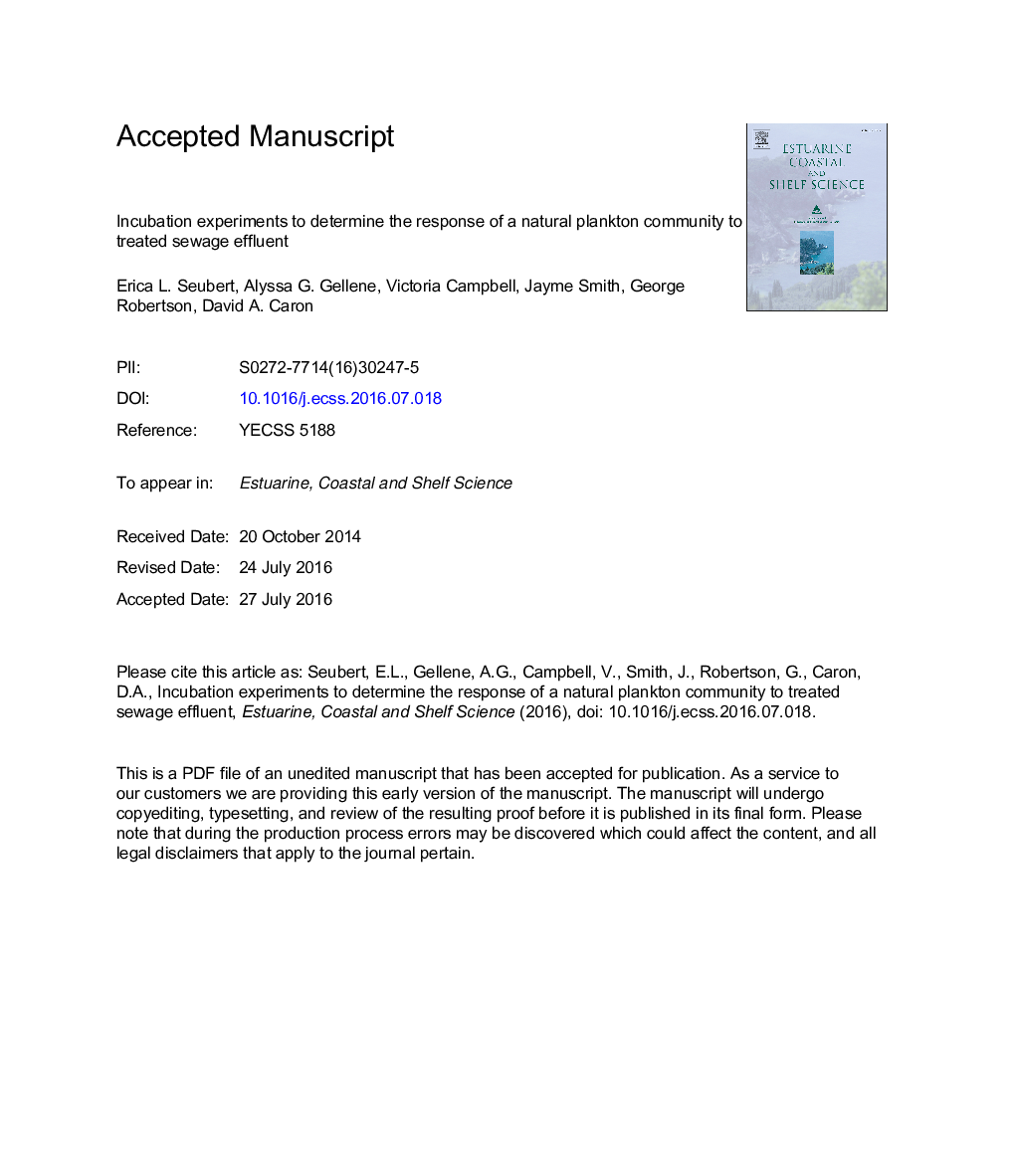| Article ID | Journal | Published Year | Pages | File Type |
|---|---|---|---|---|
| 5765184 | Estuarine, Coastal and Shelf Science | 2017 | 40 Pages |
Abstract
The Orange County Sanitation District diverted flow of secondarily-treated effluent from a discharge pipe located 8.0 km offshore at 60 m depth to an outfall located 1.6 km offshore at 16 m depth for three weeks in September of 2012. Two incubation experiments were performed to examine the potential for this effluent to stimulate the growth and impact the structure of natural, coastal plankton communities. The first experiment was initiated a week prior to the diversion of effluent to the nearshore site ('Pre-Diversion'), and the second began a week after the start of the diversion ('Mid-Diversion'). The overall phytoplankton response observed in both experiments following effluent addition was an increase in the abundances of diatoms and photosynthetic picoeukaryotes, and a decrease in picocyanobacteria. A dramatic net increase in heterotrophic bacterial abundances also occurred in both experiments. Additions of a 1:10 dilution of effluent yielded significant increases in chlorophyll a concentrations, although this treatment in the Pre-Diversion experiment exhibited a 3 day lag in response to effluent addition, perhaps indicating that the Pre-Diversion community was inhibited by the enhanced chlorination process that was enacted during the diversion. Domoic acid producing diatoms in the genus Pseudo-nitzschia were present in the plankton throughout the experiments, but domoic acid production was only detected during the Mid-Diversion experiment. The highest concentration of domoic acid measured, 0.42 ± 0.057 μg/L, coincided with phosphate and silicate concentrations below the detection limit of the method, suggesting limitation by these macronutrients.
Related Topics
Physical Sciences and Engineering
Earth and Planetary Sciences
Geology
Authors
Erica L. Seubert, Alyssa G. Gellene, Victoria Campbell, Jayme Smith, George Robertson, David A. Caron,
